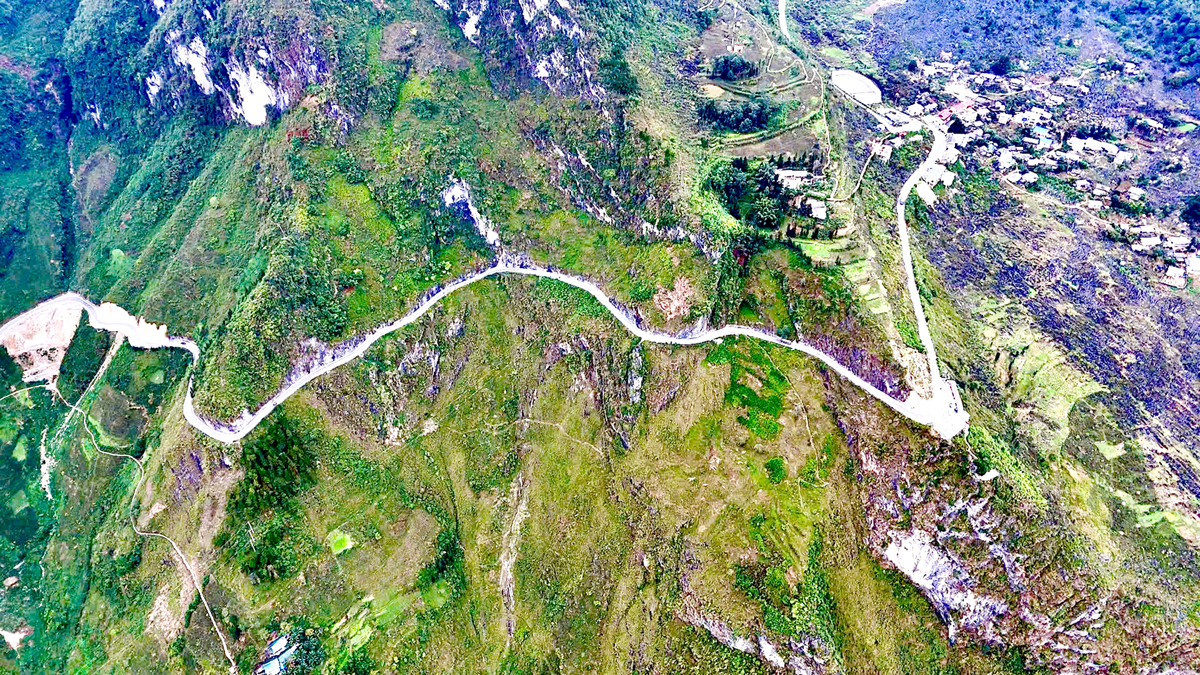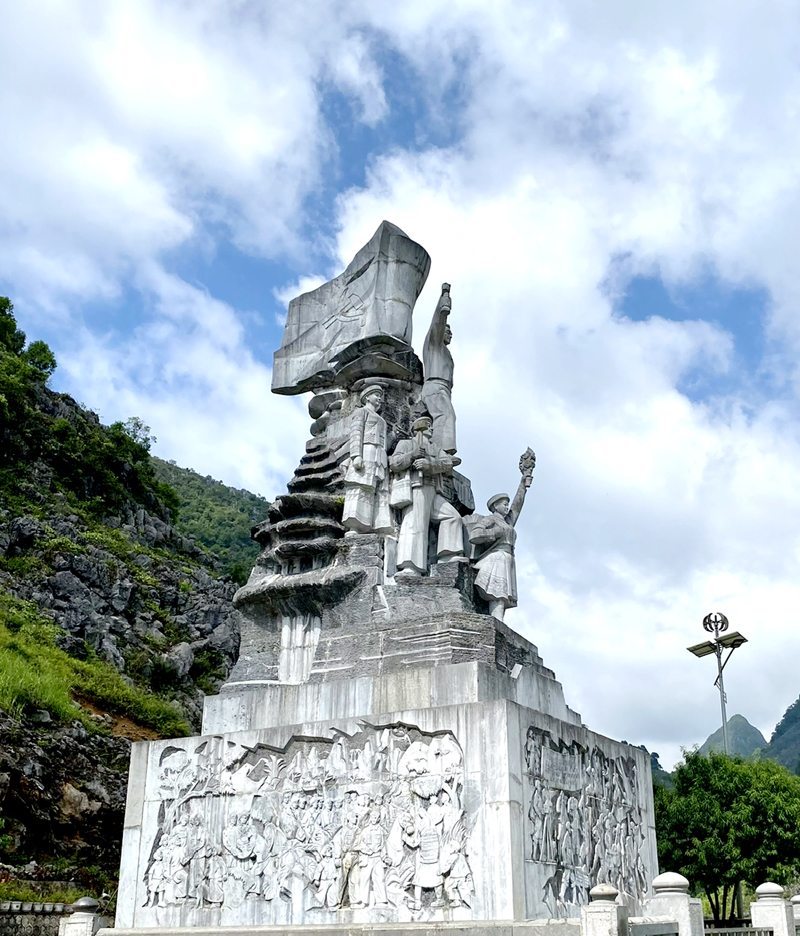Happiness Road - a road built from the bold spirit in thought and action
BHG - In the 1960s, one of the greatest difficulties facing Ha Giang Province was its roads. At that time, the roads to the province’s north and west were all narrow paths.
With a bold spirit in thought and action, the Ha Giang Party Organisation determined it needed to build roads to foster development. Regional and central authorities approved the proposal to construct the Ha Giang-Dong Van Road.
 |
| A section of the Happiness Road through Ma Pi Leng in Meo Vac District. |
On September 10, 1959, construction began on the Ha Giang-Dong Van Road. Spanning an extraordinary length of 185 kilometres from Ha Giang Town to Meo Vac District, the road was completed in March 1965 after years of hardship.
The road passes the majestic karst plateau, so some call it the limestone road. Fourteen people lost their lives, and many others were injured during the arduous and dangerous process of building the road. This great labour achievement reflected the great will of young volunteers from Cao Bang, Bac Kan, Lang Son, Thai Nguyen, Tuyen Quang, Ha Giang, Nam Dinh and Hai Duong, as well as the contributions of local residents in Ha Giang. They contributed over 2.24 million working days to dig nearly 3 million cubic metres of soil and rocks.
 |
| A monument to young volunteers who built the Happiness Road. |
With its value and significance to the lives of the Ha Giang people, the road was named Happiness. It is one of the roads in Vietnam boasting a beautiful name and the most breathtaking scenery.
After work on the road began, districts in the karst plateau were also split to form the current four districts. The people’s lives have been significantly improved. The first cars were able to arrive in Dong Van Township in 1963 and the centre of Meo Vac District in 1965.
Happiness gradually comes as poverty gradually goes away. In recent years, more and more roads, schools, healthcare stations and electricity infrastructure have been built in all communes and townships, while freshwater has filled the “hanging lakes” to quench the thirst. Children eagerly head to school in hopes of a better future.
Notably, the limestone region has become an appealing tourist destination. The legendary road now takes tourists to the Dong Van Karst Plateau, a UNESCO Geopark. The road also takes countless proud Vietnamese to the Lung Cu National Flag Tower.





READER COMMENTS